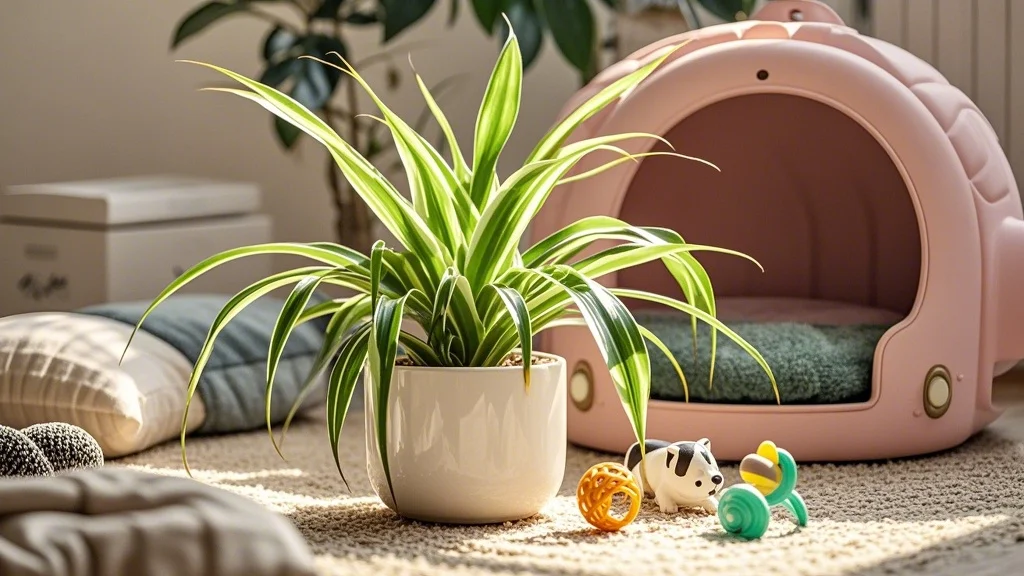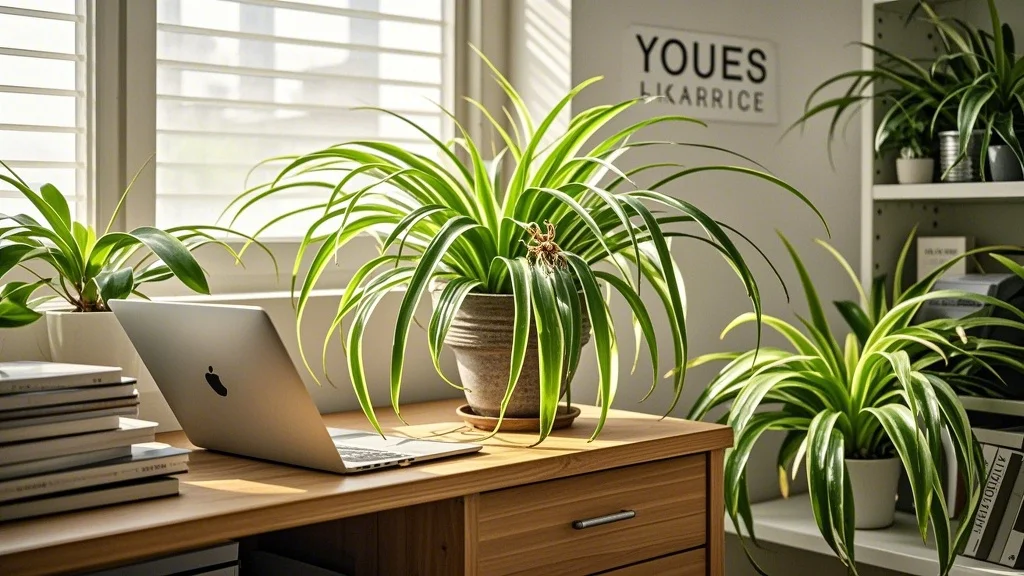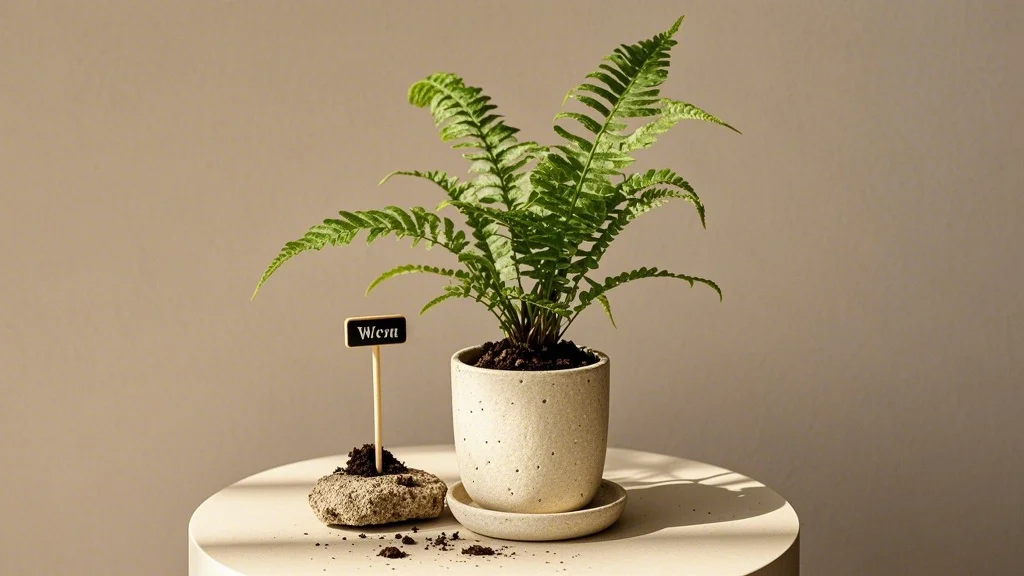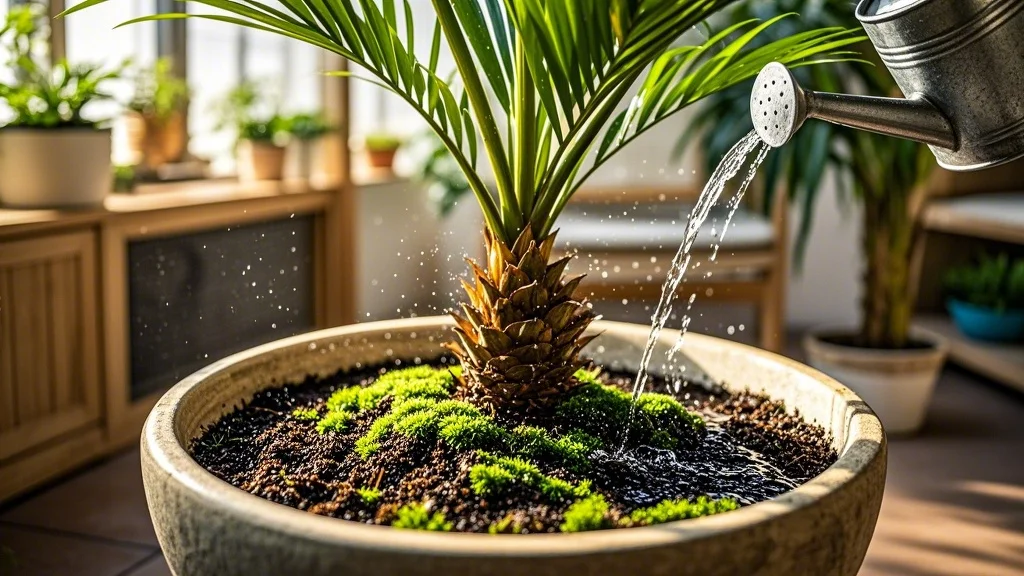In our quest for cleaner indoor air, nature often provides the most elegant solutions. The spider plant (Chlorophytum comosum) stands out as a prime example of how a humble houseplant can significantly improve air quality while being completely safe for our furry companions. This article delves into the air-purifying prowess of spider plants, their benefits for pet owners and health-conscious individuals, and how to harness their full potential in urban environments.
Contents
- 1 The Science Behind Spider Plant Air Purification
- 2 Benefits for Pet Owners
- 3 Health Benefits for Humans
- 4 Maximizing Spider Plant Air Purification
- 5 Spider Plants vs. Air Purifiers
- 6 Propagation: Spreading Clean Air
- 7 Combining Spider Plants with Other Air Purifiers
- 8 Spider Plants in Different Urban Settings
- 9 Seasonal Considerations
- 10 Conclusion
The Science Behind Spider Plant Air Purification
NASA’s Clean Air Study
In the late 1980s, NASA conducted a groundbreaking study on indoor air pollution abatement. The research aimed to find effective ways to purify air in sealed environments like space stations. Spider plants emerged as one of the top performers in removing indoor air pollutants.
How Spider Plants Clean the Air
Spider plants utilize a process called phytoremediation to remove toxins from the air. Their leaves absorb airborne pollutants through tiny pores called stomata. Once inside the plant, these toxins are broken down into harmless compounds or stored in plant tissues.
Toxins Removed by Spider Plants
Spider plants are particularly effective at removing:
- Formaldehyde
- Xylene
- Carbon monoxide
- Benzene
- Trichloroethylene
These compounds are common in urban environments and can off-gas from furniture, carpets, paints, and cleaning products.
Benefits for Pet Owners

Non-Toxic Nature
One of the most significant advantages of spider plants is their non-toxic nature. Unlike many other air-purifying plants, spider plants are completely safe for cats, dogs, and other pets. This makes them an ideal choice for pet owners who want to improve their indoor air quality without risking their animals’ health.
Safe Even If Ingested
While it’s always best to discourage pets from nibbling on houseplants, accidental ingestion of spider plant leaves won’t cause harm. This peace of mind is invaluable for pet owners who have curious cats or dogs that like to explore with their mouths.
Stress Reduction for Pets
Improved air quality can have a positive impact on pet health. Cleaner air may help reduce respiratory issues and allergies in pets, potentially leading to a calmer and more comfortable living environment.
Health Benefits for Humans
Improved Indoor Air Quality
By removing toxins and increasing oxygen levels, spider plants contribute to better overall indoor air quality. This can lead to numerous health benefits for humans:
- Reduced risk of headaches and dizziness
- Improved concentration and productivity
- Better sleep quality
- Decreased likelihood of respiratory irritation
Humidity Regulation
Spider plants naturally increase humidity levels in their immediate surroundings. This can be particularly beneficial in dry urban environments or during winter months when indoor heating systems tend to dry out the air.
Stress Reduction and Mental Health
The presence of plants in indoor spaces has been linked to reduced stress levels and improved mental well-being. Spider plants, with their cascading foliage, can create a calming, natural aesthetic that contributes to a more relaxing home or office environment.
Maximizing Spider Plant Air Purification

Optimal Placement
To maximize air purification, consider placing spider plants in areas with:
- High foot traffic
- Near potential sources of pollutants (e.g., near new furniture or electronics)
- In bedrooms to improve air quality during sleep
- In home offices to enhance productivity and focus
Quantity Matters
While a single spider plant can make a difference, multiple plants will have a more significant impact on air quality. A general rule of thumb is to have at least one medium to large-sized spider plant per 100 square feet of living space.
Caring for Your Air-Purifying Spider Plants
To ensure your spider plants are operating at peak air-cleaning efficiency:
- Provide bright, indirect light
- Water when the top inch of soil feels dry
- Fertilize monthly during the growing season
- Clean leaves regularly to remove dust and maximize air absorption
- Maintain temperatures between 60-80°F (15-27°C)
Spider Plants vs. Air Purifiers
Natural vs. Mechanical
While electronic air purifiers can be effective, spider plants offer a natural, energy-efficient alternative. They don’t require electricity, produce no noise, and have the added benefit of improving aesthetics.
Ongoing Benefits
Unlike mechanical air purifiers that need filter replacements, spider plants continue to purify air as long as they’re healthy. They even improve their efficiency as they grow larger and produce more foliage.
Cost-Effectiveness
Spider plants are significantly more cost-effective than most air purifiers. The initial investment is low, and ongoing care costs are minimal compared to the electricity usage and filter replacements required by mechanical purifiers.
Propagation: Spreading Clean Air
Easy Multiplication
One of the most exciting aspects of spider plants is their ability to produce “spiderettes” – small plantlets that can be easily propagated. This means you can multiply your air-purifying army with minimal effort and cost.
Steps for Propagation
- Wait for spiderettes to develop roots
- Cut the spiderette from the mother plant
- Plant in a small pot with well-draining soil
- Keep the soil moist until new growth appears
- Care for the new plant as you would the mother plant
Creating a Clean Air Network
By propagating spider plants, you can create a network of air-purifying plants throughout your home or office. Share spiderettes with friends and family to spread the benefits of cleaner air.
Combining Spider Plants with Other Air Purifiers
Synergistic Effects
While spider plants are excellent air purifiers on their own, combining them with other air-cleaning plants can create a more comprehensive air purification system. Consider pairing spider plants with:
- Snake Plants (Sansevieria)
- Peace Lilies (Spathiphyllum)
- Boston Ferns (Nephrolepis exaltata)
- Bamboo Palms (Chamaedorea seifrizii)
Creating a Diverse Indoor Ecosystem
By incorporating a variety of air-purifying plants, you can target a wider range of indoor pollutants and create a more diverse, aesthetically pleasing indoor environment.
Spider Plants in Different Urban Settings
Apartments and Small Spaces
Spider plants are ideal for apartment dwellers due to their compact size and ability to thrive in various light conditions. Hang them in macramé planters to save floor space and create a cascading effect.
Offices and Workspaces
In office environments, spider plants can help combat the effects of electronic off-gassing and improve air quality in shared spaces. Their low maintenance requirements make them perfect for busy professionals.
Schools and Daycares
The non-toxic nature of spider plants makes them an excellent choice for educational settings. They can serve as both an air purifier and an educational tool for teaching children about plant care and environmental science.
Seasonal Considerations
Winter Care
During winter months, when windows are often closed and heating systems are in use, spider plants can be particularly beneficial in maintaining good indoor air quality. However, they may require extra humidity and protection from cold drafts.
Summer Growth
Spider plants often experience more robust growth during summer months. This increased foliage production can lead to enhanced air purification capabilities, making summer an ideal time to propagate and expand your spider plant collection.
Conclusion
Spider plants offer a natural, effective, and pet-safe solution to indoor air pollution. Their ability to remove common toxins, combined with their easy care requirements and non-toxic nature, makes them an ideal choice for health-conscious individuals and pet owners alike. By incorporating spider plants into your urban living spaces, you can create a cleaner, healthier environment that benefits both humans and animals. As we continue to spend more time indoors, particularly in urban settings, the importance of clean air cannot be overstated. Spider plants provide a simple, beautiful, and scientifically-proven method to improve the air we breathe every day.








